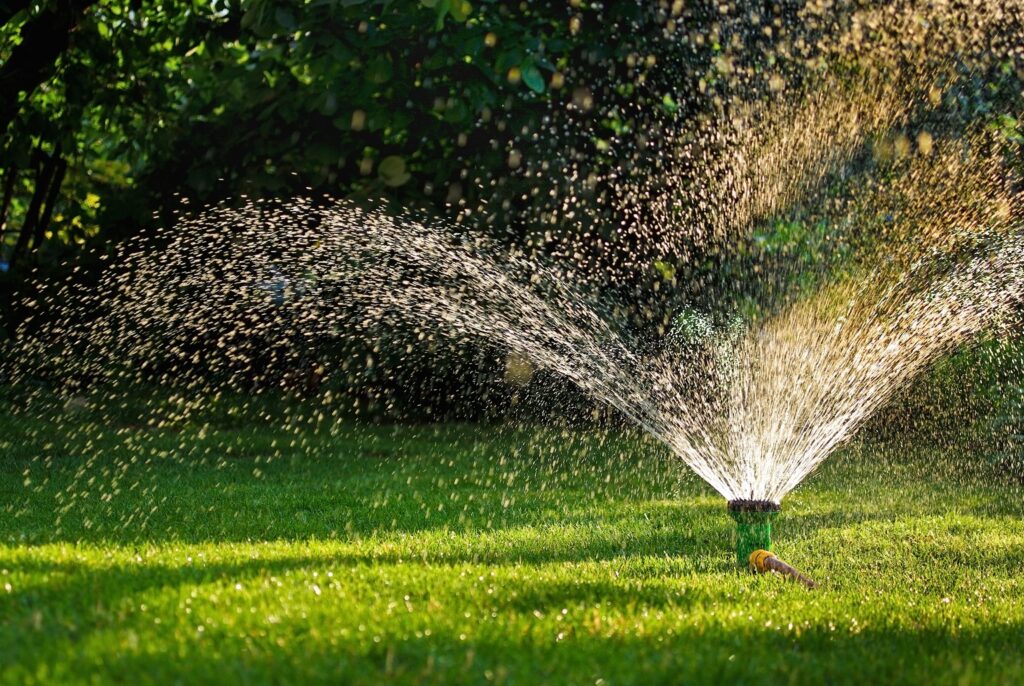
By Todd Danielson, VP of Engineering, Texas Water Utilities, SouthWest Water Company
Summertime calls for frequent and substantial uses of water to keep ourselves, our food and our lawns healthy. According to the Texas Water Development Board, the largest use of water is for irrigation, making up 59% of the state’s total water use. Conserving water today will save you money on water and wastewater bills, reduce the cost of building new water and wastewater infrastructure and leave more water in rivers and lakes for you to enjoy.
Despite the heat of Texas summers, there are simple ways to conserve when you’re watering the lawn, landscaping or cooling off in the pool.
Watering the Lawn
To lessen the amount of water evaporating from your lawn, water before sunrise and do not water when it’s windy. Raise your lawnmower cutting height to 3 inches. Longer grass blades help shade roots, reduce evaporation and inhibit weed growth. Set your sprinklers to water only the lawn, not the street or sidewalk, and use soaker hoses or trickle irrigation systems for trees and shrubs.
To ensure you’re not watering too much, use an empty tuna can to measure the water from your sprinkler. Typical lawns need about an inch a week, so when the can fills you should stop watering. Depending upon weather and soil conditions, lawns require up to daily watering in June, July and August (so, that means about one inch spread across seven days). You can decrease watering to every second or third day in the spring and fall months, and every fifth to the seventh day in the winter months.
Irrigation Systems
For those with existing irrigation systems, there are water-saving technologies that can be incorporated to help portion water use. Smart irrigation controllers, rain sensors and soil moisture sensors can control the amount of irrigation based on the season and adjust how long each zone is irrigated. Smart controllers will not irrigate if a certain amount of rain is predicted, if it is a certain temperature or if there is too much wind.
Landscaping
Cutting back on irrigation is possible through thoughtful landscaping and using fewer water features. Consider planting shade trees for lawns, such as a Live Oak, Shumard Red Oak or a Chinquapin Oak, drought-tolerant shrubs and native vegetation. Trees and shrubs have deep root systems, so water these longer and less frequently than shallow-rooted plants. Place mulch around shrubs and garden plants to reduce evaporation from the soil surface and minimize weed growth.
Consider planting Bermuda grass, which can tolerate hot weather in the summer and requires less water than St. Augustine grass. Bermuda grass also requires less fertilizing—typically twice a year—which will also save on watering. Artificial turf and rockscapes are popular alternatives to the traditional grass lawn that do not require watering.

Pools and Water Features
Homeowners with swimming pools can still enjoy cooling off while conserving water. Pool covers can help reduce evaporation and the need for cleaning by keeping out dirt and debris. Cartridge pool filters help save water by eliminating the need to backwash or run water to clean out debris, and shrubs help reduce evaporation from the wind. Fountains, waterfalls and other water features should be turned off when not in use.
Check for Leaks
Regularly check to make sure you don’t have a leak in your yard line. Look for water on the sidewalk, water collecting in your yard and moisture accumulating on the outside walls of your home. Listen for the sound of running water inside your home, even when water is turned off—this can be a clear indicator you have a leak.
To prevent leaks, leak detectors can be installed on the line coming into your house and will learn your patterns to notify you when water is running when it’s not supposed to be. To help save water, among other things, SouthWest Water Company has started transitioning our 43,000+ customer water meters to advanced metering infrastructure (AMI), which can detect leaks and automatically text opted-in customers so they can address the issue quickly.
Water conservation should be a way of life, so make it your choice to change your habits. Small changes, if done on a large scale, make a big impact on our most precious resource.
Todd Danielson is the VP of Engineering for Texas Water Utilities, SouthWest Water Company. SouthWest Water Company provides water and wastewater services to 36 Texas counties.
